Search in the box or pick category below:

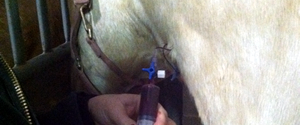
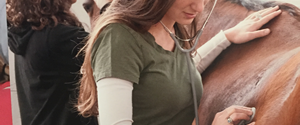
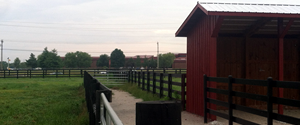

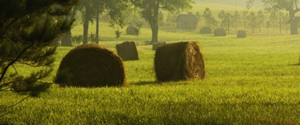
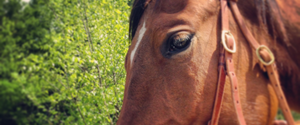
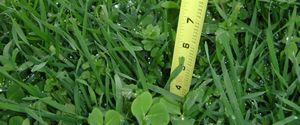
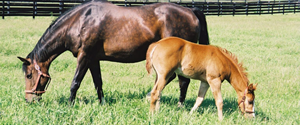
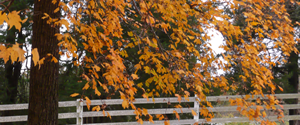
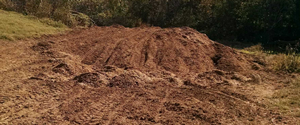
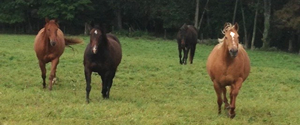
Although not every case is avoidable, the following guidelines from the American Association of Equine Practitioners (AAEP) can maximize the horse’s health and reduce the risk of colic.
Native warm-season grasses (nwsg) are grasses historically native to an area that grow during the warm months of the year and are dormant during autumn and winter. They differ from cool-season grasses, which make their active growth during spring and fall. There are many warm-season grasses native to the Mid-South region; however, seven species are most commonly promoted as cover for wildlife and/or forage for livestock. These are big bluestem, little bluestem, broomsedge bluestem, indiangrass, switchgrass, sideoats grama and eastern gamagrass.
Before you can accurately apply the right amount of herbicide to a field, you have to know how much spray mix is being applied to each acre. This knowledge will help you determine how many acres you can cover with one tank and how much herbicide to add to each tank. Sprayer calibration is not difficult, but it can be challenging if you have never seen it done before. Here are simple methods to calibrate a boom and boomless sprayer.
The plans developed at the University of Tennessee are based on the research and demonstration experiences of scientists at the university. Relevant horse and equine plans include different varieties of barns, stalls, trailers, jumps and gates.
This guide has been developed to assist Tennessee farmers and agri-entrepreneurs in evaluating agritourism enterprise opportunities, planning agritourism enterprises, and dealing with issues and obstacles faced by existing agritourism enterprises. Information for horse farm owners interested in agritourism contained in this guide includes business planning, marketing, customer service, risk assessment, safety and more.
Alfalfa (scientific name Medicago sativa) is one of the most well known and widely used forage crops in the world. Its high yield and quality allow it to be used in feeding programs for many different types of livestock. In Tennessee, alfalfa is used primarily as a feed for horses and dairy cattle.
When the cost of hay is too high or the availability of hay is too low, then consider alternative feed such as alfalfa, beet pulp, and rice bran. It is also strongly recommended to consult your veterinarian or equine nutritionist.
These guidelines will assist in establishing routine checks on equipment and machines for horse care.
Caring for a hoof or lower leg injury can be very labor intensive. Even under the most ideal management conditions, the horse’s lower extremities are regularly exposed to dirt, debris, moisture and manure. Without a properly applied bandage, it could be difficult-if not impossible-to heal many types of foot and lower leg injuries.
The longhorned tick (Haemaphysalis longicornis) is native to to eastern China, Japan, the Russian Far East, and Korea. In late 2017, the United States Department of Agriculture’s National Veterinary Services Laboratories (NSVL) confirmed the presence of the longhorned tick in the United States. Longhorned ticks are light brown in color and the adult female grows to the size of a pea when it is full of blood. Learn more about this invasive tick in this USDA publication.
The Asian Longhorned tick was initially identified in the United States in 2017, but was recently detected for the first time in TN. Information detailing identification, impact, lifecycle, and protection methods for people, livestock and pets are detailed in this publication.
The potential for nitrate nitrogen to leach through an agricultural soil depends on several factors, including soil properties that affect rate of water movement through the soil and rate of surface runoff, rainfall, and the amount and type of nitrogen fertilizer being applied to the field.
The goal of this Farm•A•Syst fact sheet is to help you protect and improve the groundwater that supplies your drinking water as well as the ponds, lakes, rivers, and streams that make Tennessee beautiful.
Livestock yards—such as barnyards, holding areas, and feedlots are areas where livestock wastes are concentrated, and thus they can be a source of nitrate and bacterial contamination of surface or groundwater.
Volumes of material have been written on broodmare management. A common sense approach, combined with scientific management principles, will allow for a successful breeding program.
Follow these guidelines from the American Association of Equine Practitioners (AAEP) to help you prepare for an equine emergency.
The bermudagrass stem maggot (Atherigona reversura) is becoming a troublesome insect in bermudagrass pastures and hayfields across Tennessee. The discoloration of the upper leaves causes the field to look like there has been a light frost. If left uncontrolled, up to 80 percent of the tillers in the field can be affected, resulting in significant yield reduction.
Tall fescue is a hardy grass that is easily established, tolerates close grazing, stands up to heavy horse traffic and many other desirable traits. Unfortunatley many fescue related propblems can occur in pregnant broodmares. This article describes the toxic principle, managment practices and medical treatments available to aid in managing pastures and horses.
Managing horses during hot weather can be a challenge for horse owners. Horse owners need to provide extra care during hot weather in order to decrease stress and maintain health and well-being of the horse.
Blister beetles are toxic to horses if ingested. They live and feed in alfalfa fields. Here are some precautions to reduce this risk.
Buttercup species contain the oil protoanemonin, which can cause oral and gastrointestinal irritation. Toxicity varies with species, age, and habitat, but in general, the leaves and stems of flowering plants have the highest concentration. Poisoning is uncommon, but can occur when desirable forages are in short supply.
Horses have relatively long life spans compared to other livestock and companion animals, often living into their late 20s and early 30s. Good nutrition, maintenance and veterinary care allow horses to lead longer and more productive lives; however, as horses age, their needs change and additional care may be required to keep them as healthy as possible.
Overweight horses may have poor performance, overheat, and are prone to disease. Regular exercise and diet restriction can help reduce body weight. Veterinarians and equine nutritionists can also create a body weight loss program.
Veterinarians and equine nutritionists can determine causes of why a horse is underweight. Reasons may include not enough calories, age, environment, climate, or health. If more calories are needed, then start with allowing access to hay/forage/pasture at all times.
Chinese privet spreads rapidly both from root sprouts and seed, and it can quickly displace native vegetation and dominate a large portion of a pasture. Fruit of privet can be toxic, but problems in humans and animals are rare.
This presentation drives home the message of minimizing colic through proper management, identifying potential problems early and taking appropriate measures to ensure the health of the horse.
Dental care in the horse involves the same principles as human dentistry; many of the diseases seen in people’s teeth are also diagnosed and treated in the horse. For example periodontal disease or disease of the structures surrounding the tooth is the number one cause of premature tooth loss in both horses and humans.
If you own horses long enough, sooner or later you are likely to confront a medical emergency. From lacerations to colic to foaling difficulties, there are many emergencies that a horse owner may encounter. You must know how to recognize serious problems and respond promptly, taking appropriate action while awaiting the arrival of your veterinarian.
This presentation offers an overview of the causes of laminitis as well as prevention measures and treatment options.
Help educate your clients on the importance of feeding a healthy diet to their horse and avoiding the temptation of over-feeding the overweight horse.
Streptococcus equi (commonly known as S. equi) bacteria gain access to your horse either through the nose or mouth to cause Strangles. They then invade lymph nodes in the head and throat. What follows is a purulent (pus-like) nasal discharge and abscess formation in the lymph nodes. Other signs that might develop include fever, loss of appetite, and listlessness.
Cold temperatures combined with wet and windy conditions increase the amount of feed necessary to maintain proper body condition in horses, especially those that are kept outside. Extra calories necessary to meet the increased energy requirements of horses should first be provided by good quality hay.
Colic is pain in the abdomen, usually severe and fluctuating. It is the most common emergency with horses. Calling your veterinarian at the sign of symptoms is important.
Symptoms of eye disorders in horses may include swelling, redness, cloudiness, tearing, and/or squinting. Your veterinarian should examine and discuss treatment options.
Ticks are external parasites of mammals, birds and reptiles and feed only on blood of their hosts. Ticks frequently wait for a host on vegetation along trails and paths traveled by people or animals.
Agritainment (agritourism and entertainment farming enterprises) has an extensive history in the United States. Farm-related recreation and tourism can be traced back to the late 1800s, when families visited farming relatives in an attempt to escape from the city’s summer heat. Tennessee’s broad mix of agricultural production (cotton, soybeans, corn, tobacco, dairy, beef, horse, sheep, vegetables, specialty crops and forestry), creates a favorable foundation for success in the agritourism industry.
An effective disease control program is extremely important to maintain the health and usefulness of a horse. A disease control program is just part of a total management scheme of proper health, nutrition, reproduction, growth and performance.
A rigid herd health protocol will never fit every individual situation: however, there are certain guidelines that all good horse owners can follow in establishing a parasite management program. Horse owners must review the problems of their particular farm or locality and make the herd health program fit the individual situation.
Weeds are plants that are considered to be undesirable or unpalatable. Some weeds can be mildly toxic (buttercups) while others can be severely toxic (nightshade). Good pasture and grazing management is the best defense against weeds in horse pastures.
Breeding with cooled shipped semen allows mares to be bred to distant stallions. However, to be successful, attention to detail is a must.
An outdoor classroom is an outdoor educational facility that can be developed into a natural study grounds for educators, students and anyone interested in the natural environment. All subjects or curriculum can be presented in an outdoor classroom. Outdoor classrooms also provide alternatives for all to gain a better knowledge of what natural resources are and to understand the interconnectedness of these resources.
Communicating the intended purpose of a horse is critical for the veterinarian to do a thorough and appropriate pre-purchase evaluation. Drug screening is an important component of the pre-purchase evaluation because it offers additional information pertaining to the ability of the horse to fit the buyer’s needs.
This “Sleeping Sickness” is a viral disease transmitted by mosquitoes, birds, and rodents. Vaccinated horses can also unfortunately develop this disease. Call your veterinarian at the sign of symptoms.
FAQ: Regarding Equine Herpesvirus (EHV)
Embryo transfer (ET), an advanced reproductive technology, has several potential uses in equine reproduction. ET can be used to increase the annual reproductive rates in mares.
An emergency is a medical condition that requires immediate care. Sensible emergency care can prevent the problem from worsening, reduce discomfort and promote rapid correction of the problem. Use the tips within this factsheet to best prepare for an emergency situation.
Appropriate types of helmets approved for equine events, determining proper helmet fit, along with unapproved protection are covered in this reference guide.
Learn about how Traditional Chinese Veterinary Medicine utilizes acupuncture, the stimulation of acupuncture points, or acupoints, using tiny needles to reestablish the flow ofQi.
While proper vaccination is important in protecting against disease, vaccines do not provide guaranteed protection. Horse owners should employ hygiene and biosecurity practices on and off the farm to help prevent the spread of equine disease.
Botulism is a progressive, flaccid paralysis resulting from Clostridium botulinum toxin production and absorption that can be rapidly fatal if not aggressively treated from the first signs of intoxication.
Stretching for carrots (or candy canes) is a great way to increase horse flexibility, improve core strength, and better balance. A handler or assistant is also needed for safety and the exercises. Remember to reward your horse with the carrot afterwards!
This article highlights what castration is and some reasons for it. Surgical risks and complications are lower for young horses. Usually the ideal time for castration is between 6-12 months of age. Recovery is usually a few days.
This disease, specifically an endocrine disorder, is caused by hormone imbalance (cortisol and dopamine). Some of the effects are long, curly haircoat and muscle loss. Blood tests can determine if Cushings is present. Medication is the usual treatment.
In light of recent flooding, wildfires, and other natural disasters in the United States, there has been increased concern regarding how to prepare horse farms for various natural disaster situations. Being prepared before disasters occur is the best way to increase your animal’s chance of survival and safety.
An effective disease prevention program is essential for equine health and well-being. Understanding disease risk, transmission, and how to implement preventative measures is extremely important to maintain the health and usefulness of the horse throughout its lifetime.
Responsible equine ownership includes making inevitable decisions concerning mortality and disposal of deceased animals. Proper equine disposal is an important consideration for all horse owners, whether the cause of death is humane euthanasia due to old age or injury, or if the death is unexpected.
Horses come in many colors, all of which are controlled by genetic variation in one or more genes within the horse’s genetic makeup. This publication discusses basic coat color descriptions and associated genes that are responsible for producing each color.
Equine Infectious Anemia (EIA) is caused by equine infectious anemia virus (EIAV), a lentivirus in the family Retroviridae. EIA has been found nearly worldwide. Countries free of EIA include Iceland and Japan.
Also known as “swamp fever” or “horse malaria”, this disease affects platelets, red blood cells, and inflammation in organs. There is a Federal and State program with a Coggins blood test to control this disease. Unfortunately there is no treatment or vaccination for this virus.
Equine influenza virus is a RNA virus which is endemic in horse populations in many countries worldwide and which occurs sporadically in epidemic form from time to time.
Countries free of equine influenza include Iceland, Australia and New Zealand. Outbreaks are possible and occur in endemic countries.
Information within this publication includes how lamenesses are diagnosed, scored and current technology available to assess a horse’s gait and abnormalities.
Surgery performed laparoscopically to the abdomen/flank means a minimally invasive technique with heavy sedation which helps determine a diagnosis and treatment. Preparations include fasting, bathing, and wellness checks. Your horse can have fresh water at all times though.
This means dental care in horses and is a procedure where the tooth enamel is reduced or reshaped. Horse teeth continually wear and tear and erupt and veterinarians float and rasp (remove just enough) the teeth to reduce the sharp points. Horses may then chew more functionally and comfortably. Tennessee law requires odontoplasty to be performed by veterinarians only.
Equine dentistry now includes resolving misalignments, fighting peridontal disease and hypercementosis syndrome. A thorough, complete, and successful dental exam should include an external exam of the head as well as evaluation of contact areas of the teeth, oral cavity’s soft tissue, tissues surrounding the teeth, and dental pulp. Horses should receive an oral exam at least once annually.
Equine piroplasmosis (EP) is a tick-borne or blood-borne protozoal disease of equids (horses, donkeys, mules and zebras).
The etiologic agent is one of two protozoan parasites, Theileria equi or Babesia caballi. An organism related to T. equi was described in horses in 2018 and confirmed as a new species, Theileria haneyi. Its clinical significance is currently undetermined.
Equine piroplasmosis (EP) is a tick-borne disease that affects horses, donkeys, mules, and zebras. The disease is transmitted via tick bites or through mechanical transmission by improperly disinfected needles or surgical instruments. The increasingly international nature of the horse industry presents potential risks for EP’s introduction from foreign countries.
Piroplasmosis is a potential disease caused by tick bites. It affects horses, mules, donkeys, and zebras. This tick-borne disease is usually found in tropical areas but has also appeared occasionally in the US. In international equine travel, shipping, sports, and events, this is a major issue and risk. There is a drug that helps alleviate the symptoms.
Guidelines used by the University of Tennessee Veterinary Medical Center to perform and complete a pre-purchase evaluation on horses.
Here are some helpful guidelines when considering purchasing a horse. You will also want to consult with your veterinarian about expectations and customizations. Along with the basic evaluation, you may want to have additional testing done such as endoscopy, bloodwork, or x-rays.
Drug screening offers additional information related to the horse ability. Some medications would alter the health and suitability outcomes. Blood samples are usually taken and sometimes urine samples. Results are normally available within a few days.
Equine protozoal myeloencephalitis (EPM) is a neurologic disease of horses caused by protozoal infection of the central nervous system. Sarcocystis neurona causes most cases; Neospora hughesi can also cause disease. Both organisms are obligate intracellular pathogens in the protozoan phylum Apicomplexa.
In regenerative therapy, UTCVM has a team of biologists, engineers, veterinarians, and physicians to use stem cells and study stem cell biology. The initiative helps connect laboratory research and clinical treatments. The team studies bone and cartilage disease, corneal disease, nerve injuries, and wounds healing.
The United States is home to numerouspoisonous plants to horses. Some are rare, but most arecommon weeds and trees. The toxicity of the plant generally depends on soil, climate and lifestage of the plant as well as the horse’s age, weight and tolerance. Normally, a horse must ingest alarge amount of the plant before toxicity occurs, while others require only a slight nibble orrepeated grazing to be deadly. Most poisonous plants have low palatability, and horses tend toavoid them. However, when they are hungry, horses will eat anything they can access. The mostcommon cause of ingestion is hunger when a horse is on an overgrazed pasture or its nutrition isnot balanced. In addition to pasture plants, toxins alsocan be found in hay, contaminated grain,ornamentals and clippings.
The United States is home to numerous plants that are poisonous to horses. Some are rare, but most are common weeds and trees. The toxicity of the plant generally depends on soil, climate and life stage of the plant as well as the horse’s age, weight and tolerance. Normally, a horse must ingest a large amount of the plant before toxicity occurs, while others require only a slight nibbler repeated grazing to be deadly. Most poisonous plants have low palatability, and horses tend toavoid them. However, when they are hungry, horses will eat anything they can access. The mostcommon cause of ingestion is hunger when a horse is on an overgrazed pasture or its nutrition isnot balanced. In addition to pasture plants, toxins can also be found in hay, contaminated grain,ornamentals and clippings.
The United States is home to numerous poisonous plants to horses. Some are rare, but most are common weeds and trees. The toxicity of the plant generally depends on soil, climate and life stage of the plant as well as the horse’s age, weight and tolerance. Normally, a horse must ingest a large amount of the plant before toxicity occurs, while others require only a slight nibble or repeated grazing to be deadly. Most poisonous plants have low palatability, and horses tend toavoid them. However, when they are hungry, horses will eat anything they can access. The mostcommon cause of ingestion is hunger when a horse is on an overgrazed pasture or its nutrition isnot balanced. In addition to pasture plants, toxins canalsobe found in hay, contaminated grain,ornamentals and clippings.
Equine Viral Arteritis (EVA) is a contagious disease caused by equine arteritis virus (EAV). While it is rarely life threatening to otherwise healthy adult horses, EVA is of special concern to horse breeders because it can cause abortion in pregnant mares, death in young foals and render breeding stallions permanent carriers of the virus.
A horse’s body weight can fluctuate due to season, food availability, changes in exercise, reproductive activities, parasites and dental problems.Body condition scoring is a useful tool in assessing and managing body weight of horses. Developed by Dr. Don Henneke and colleagues in 1983 as a tool to accurately assess stored body fat in horses, the body condition scoring system has become standard for evaluating equines across breed and age.
Regular evaluation and monitoring of your horse can help identify health issues. Assessments include body weight, body condition scoring, cresty neck scoring, and muscle evaluation. Consult a veterinarian or equine nutritionist if your horse has low energy or suboptimal performance. Routinely check for fecal quality, hoof quality, hair/mane/tail quality.
Conformation is the physical appearance of an animal due to the arrangement of muscle, bone and other body tissue. All horses have conformation. However, the quantity and quality of the blending of these body parts determine the acceptability or unacceptability of the horse’s conformation.
Body condition scoring (BCS) is a method of estimating the amount of fat on a horse’s body on a scale of 1 (extremely thin) to 9 (extremely fat). Assessing BCS is a helpful tool to evaluate a horse’s nutritional status throughout the year to make sure they are maintaining appropriate weight.
Conformation is directly related to skeletal structure. The skeleton of the horse will determine the length and slope of shoulder, overall height and length, length of back, and all the other things that are related to skeletal design.
Evaluating a horse’s weight and body condition is important for overall health and nutritional management. Estimates of a horse’s weight made by owners are often under- or overestimated by as much as 150 pounds. Determining a horse’s nutrient requirements requires calculating body weight and assessing body condition accurately. Body weight is measured in pounds or kilograms where as body condition refers to how much or how little fat coverage the horse displays. Both can beuseful tools when evaluating a horse’s dietaryneeds. By estimating and meeting nutrientrequirements on a daily basis, weight loss orgain can be avoided.
The nutritional management of senior horses is a rising concern because of the increasing number of senior horses in the U.S. The nutrient requirements of senior horses differ from other classes of horses because of the changes in metabolic and digestive efficiency that accompany the aging process.
Beet pulp , the fibrous material left over after sugar is extracted from sugar beets, is a versatile and inexpensive source of fiber and nutrients for horses. Beet pulp is particularly useful for adding calories to the equine diet while avoiding digestive and metabolic diseases associated with feeding grains.
Fat is the ultimate nutrient for adding extra calories to the equine diet. Adding fat to the diet provides a sager alterative to grains for horses with increased energy demands or hard keepers.
Round-bale feeders can reduce hay waste. Hay waste differs based on feeder design. Feeder design does not affect the amount horses consume.
Horse fence can be one of the most attractive features of a horse facility but not all fencing is suitable for horses. Fencing is a capital investment that should be carefully planned before construction. Fences aid facility management by allowing controlled grazing and segregating groups of horses according to sex, age, value or use.
Many advances in residential fire protection have been made, but protecting barns is much more difficult because of their harsh environment and housing requirements of horses within them. Understanding how fire and fire damage can be minimized or prevented through building techniques, fire detection options, and management practices are important for horse and human safety.
Recommendations for general equine health, care and maintenance for horse owners.
Here are some recommendations for first-time horse owners. Common health habits include diet, water, electrolytes, vitamins, supplements, Farrier (hoof maintainer), Coggins test, vaccines, deworming, dentistry, trailer, insurance, tack and supplies. The life expectancy of a domesticated horse is 25 to 30 years.
Use this publication to help breakdown the results of your forage test. Detailied definitions of each value along with relative acceptable ranges can be found to assist in deciphering results.
This publication provides definitions of nutrients that are reported from a forage analysis.
A reference guide on a multitude of cool- and warm season annuals and perennials including species, seeding rates, planting depth, seeding date and additional information.
Forages are the most important part of the diet for all classes of horses. When fresh pasture forage is not available, hay is fed to provide roughage or fiber to the horses diet. Hay should be selected based on nutrient content and physical characteristics.
The importance of variety testing is to record yield potential, cold and heat tolerance, disease resistance, stand persistence, and grazing tolerance. Evaluations are to aid producers in the selection of the best cultivars for their farm. The data conducted in variety testing program uses plot design, experimental techniques, and specific management practices specific to each forage.
Laminitis (founder) is inflammation of hoof internal tissues. Sugars and fructans in high amounts in forages can generate disease. Susceptible horses should have little to no grazing. Cool season grasses like orchardgrass, bromegrass, and timothy tend to store higher carbohydrates.
Many horses and ponies today are overweight, putting them at risk for disorders associated with obesity including insulin resistance, laminitis and equine metabolic syndrome (EMS). These diseases are associated with exceeding caloric intake requirements and high intakes of nonstructural carbohydrates (NSC), thus feed restriction and stall/dry lot confinement are recommended.
Grazing systems used in horse farms include pastures, fences and management techniques used to provide optimal forage for horses. Grazing systems should be flexible based on resources and goals and developed to meet the horses nutrient requirements.
Search a database for poisonous plants by scientific or common name, presenting clinical signs, disease symptoms or geographical locations.
Hair clipper performance has 10 steps to improve maintenance. These are clean often, take your time, cut against the hair, use lubricant diligently, prepare your patient, use the right blade for the job, assess blades with each use, store your blades, maintain clippers, and purchase high-quality clippers. Follow these tips to get the most usage out of the clipper unit and blades.
The process of heat detection, which is determining the sexual readiness of a mare, is critical in the breeding process. Heat detection using the mare’s response to a stallion is known as teasing. The teasing process is necessary because mares do not predictably show signs of heat, either alone or with a group of mares, as do other domestic livestock. Heat detection is essential for artificial as well as natural breeding.
Follow these suggestions from the American Association of Equine Practitioners (AAEP) to help the new mother and baby get off to a great start.
When pasture growth is limited, some type of stored feed must be provided to grazing animals. Hay is one of the most versatile stored feeds available for numerous reasons. Hay can be produced and fed in large or small amounts, fed either mecahnically or manually, and can supply the nutrient requirments of most classes of horses. Also, hay can be stored for long periods of time with little loss in nutritional value if protected from weather.
Horses have evolved to socialize, move around, and spend about two thirds of their time grazing. Modern horse management systems do not always allow horses to exhibit these normal behaviors and sometimes problem behaviors can arise as a result. These problems include cribbing, weaving, stall/fence walking, and separation anxiety. Behavior problems are especially troublesome if the horse spends a majority of their time performing the behavior, or if the behavior could be harmful to someone.
Manure management is a very important and inevitable part of responsible horse ownership. Manure is considered a valuable resource by many farmers for its nutrient values and soil amending characteristics. This fact sheet addresses characteristics of horse manure as well as techniques for handling, storing, composting and utilizing horse manure.
The practice of treating all horses every six weeks with rotational dewormers is no longer recommended. Learn how to properly deworm your horse using strategic deworming practices.
Each horse must be treated differently when it comes to strategic deworming. The goal of deworming is to prevent contamination of the environment from infected larvae and eggs. A good protocol is to determine if resistance is present, classify your horses, and then deworm based on classification. Remember, you can treat less often and achieve better results.
Properly managed pastures provide inexpensive and optimal nutrition for horses. Poorly managed pastures have negative impacts on the environment and the overall health and nutrition of horses. Tips on springtime pasture management including seeding pastures, weed control and grazing management contained in this factsheet.
Proper pasture management in the spring will increase the quality of the forage and prevent weeds throughout the growing season. Well-managed pastures provide optimal nutrition for horses and prevent adverse environmental impacts that result from overgrazing.
Many different flies are pests of horses and can be divided into three groups by their feeding habits. Sponging mouthparts, found on house flies and face flies, are used to sponge or sop up liquid foods. Stable flies, horn flies, horse flies and mosquitoes use piercing mouthparts to pierce the host animal’s skin so that they may feed on blood. Some flies, such as bots and cattle grubs, have no mouthparts as adults.
The importance of good flooring becomes more evident as a horse spends more time in a stall. The most suitable floor is highly dependent on management style, while personal preferences can have a strong influence. Subfloor construction and drainage features are equally as important as these strongly influence floor integrity.
Manure handling is a necessary evil of horse management. Manure management practices within horse facilities deserves special attention including characteristics and options for its movement and storage. Associated issues such as odor control, fly-breeding, and environmental impact are addressed in relation to horse facilities.
Veterinarians and equine professionals recommend good ventilation for stabled horses to maintain respiratory health. Failure to provide adequate ventilation is the most common mistake in construction and management of modern horse facilities.
The stall is the basic functional unit of a horse stable or shelter. Safety for handlers and horses should be a primary consideration for horse stall design. Guidelines for basic stall features of a typical 1000 pound horse are contained in this fact sheet.
How a horse is fed and cared for impacts their hormones and blood profile. Hay nets and limit-fed diets can reduce weight in adult horses that are overweight. Using these feeding methods together can regulate blood and hormone patterns in overweight horses.
In Tennessee, horses are commonly owned throughout the state. Tennessee law requires that all animals have necessary water, feed, shelter and care. This publication defines what are considered the minimum requirements for horses in these areas. It is important to remember that these represent only the minimums, and horse owners should strive to provide care above these levels.
Horsenettle is low in palatability; therefore, cattle and most other animals will tend to graze around it unless the stocking rate is high and grass is limited. They will also sort through infested hay bales, trying to avoid horsenettle plants.
Horseweed is native to Tennessee and can be found throughout the state in agronomic crops, pastures, orchards, roadsides and waste areas. Horseweed was not a major problem in agronomic crops until early this decade.
Taking a forage sample the correct way will make producers rations more accurate, give a better forage test result, and increase profitability by knowing what the “real” forage quality is in hay. Watch this video to learn how to take a forage sample.
Knowing how to take vitals can be beneficial to your veterinarian in an emergency. Three main signs are heart rate, respiratory rate, and temperature (TPR). The normal heart rate is 24-48 beats per minute. The normal respiratory rate is 8-24 breaths per minute. The normal temperature is 98-101 degrees F. You can also check their mucous membranes for a normal light pink color.
The Mehlich 1 and 3 soil test extractants are the most widely used in laboratories of the southern United States today. These calibrations are used to develop fertilizer recommendations for P and K using guidelines published in the University of Tennessee’s Biosystems Engineering and Soil Science (BESS) Information Sheet # 100.
Johnsongrass is a warm-season perennial grass commonly found throughout Tennessee in the summer. Horses that graze johnsongrass or other sorghum species over long periods often develop cystitis-ataxia syndrome. “Cystitis” is defined as inflammation of the urinary bladder, while “ataxia” is defined as incoordination of the muscles.
Knotroot foxtail in tall fescue pastures is difficult to control. As fescue growth slows in the summer, the foxtails are growing strong. Seedheads can interfere with grazing and lead to an accumulation of trash on top of the fescue. The most serious knotroot foxtail problems are in bermudagrass hay fields.
Land-filling can be an inexpensive (≈ $35/ton) and sometimes convenient disposal option for large animal mortalities, particularly if on-farm burial is not feasible. Most beef and dairy producers and horse owners don’t know which landfills accept dead livestock. This publication provides a map and phone numbers for Tennessee’s Class 1 landfills that are allowed to accept dead animals.
Look for the following indicators of dental problems from the American Association of Equine Practitioners (AAEP) to know when to seek veterinary attention for your horse.
The horse owner can receive years of enjoyment and satisfaction from locating and buying the RIGHT horse. This fact sheet will assist horse owners in not only locating but also selecting the most appropriate horse for their needs and desires.
Parasite management is essential to maintaining the healthand well-being of the horse and other equids. In general,parasites are organisms that form a relationship with thehorse that is harmful to the horse while beneficial to theparasite. Horses and other equids can serve as a host toa variety of internal parasites, including small strongyles,large strongyles, bots, tapeworms, roundworms andpinworms. Identifying signs of parasite infestation, alongwith developing treatment and management plans bothfor horses and for farms, are essential to equine healthprograms.
The reasons for horse ownership are numerous, but likely fall into one of three broad categories: 1) recreation, 2) profit, or 3) recreation and profit. Many horse owners do not generate income from ownership, but they all incur cost. Thus, the cost of horse ownership is the focus of this publication.
Many people are involved in a variety of horse activities, ranging from owning a horse to operating a business catering to horse owners. Horse ownership or the desire of horse ownership generally results in the demand by consumers for services related to horses. Most horse-based businesses are established as for-profit entities. Horse-based businesses may include riding lessons, horse training, boarding facility, broodmare operation, farrier or a number of other services sought by people in the equine industry. The focus of this publication will be the cost of operating a horse boarding facility and/or broodmare operation with the intent of marketing the offspring.
Proper care and management of the young foal will have a great impact on its future performance. Immediate management practices for the newborn foal as well as health and nutritional protocols for the young growing foal.
Carbohydrates must be included with a horse’s diet, however, some horses are sensitive to the content of forages. Safe carbohydrate content for sensitive horses is less than 10-12%. Alfalfa hay can be an alternative as it is also higher in digestible energy, protein, and calcium.
Managing horses during hot weather can be a challenge for horse owners. Horse owners need to provide extra care during hot weather in order to decrease stress and maintain health and well-being of the horse.
The horse is an incredible athlete, as evidenced by the diverse nature of equine performance events. Physiologic adaptations including efficient thermoregulation through sweat, elastic tendons, and a large reserve of red blood cells in the spleen provide the horse with an athletic advantage over other animals of similar body size. When determining how to manage horses in work, it is important to consider their current workload, fitness level and nutrition components. Use the information below to determine how hard a horse is working, how to make adjustments to their diet and management tips for improving fitness.
Tall fescue is one of the most abundant cool-season grasses in the Southeastern United States. Some mares grazing fescue have reproductive problems during the last trimester of pregnancy. This piublication provided information on managing fescue for different classes of horses and options available to horse owners.
Hay has been an important crop in Tennessee for many years. Farmers producing hay for the cash market have no nearby and convenient grain elevator or auction market at which to sell their product. Also, hay is not a single “crop” like soybeans, but many different “crops” in terms of types of hay (alfalfa to tall fescue), quality (high to low) and bale package (small square to large round).
Horse reproduction is an inefficient process with less than 50 percent of the mares that are bred each year foaling. A number of newer techniques are available to improve efficiency, but all require attention to detail. Many require competent technical assistance and access to prescription drugs.
Monensin is an additive used to control parasites and found in poultry and cattle feed. The cardiac muscle is the most severely affected tissue. The additive also affects skeletal muscles. Look for clinical, neurological signs for problems. Fluids may need to be administered.
During the late fall and winter months,many horse owners are not able to ride asoften as usual due to weather and shorterdaylight hours. Often, spring bringswarmer, milder weather, and horse ownersare eager to get back in the saddle and pickup where they left off the previous year.During periods of rest or decreased levelsof activity, horses can lose fitness andconditioning. Similarly, horses that areconsistently worked should be monitoredfor progress and current fitness level.
Mosquitoes can have a great impact on our lives. There are strategies you can use to reduce the mosquito population around your home! This fact sheet will describe the different types of mosquitoes found in Tennessee as well as strategies residents can use to prevent the buildup of the most common species found around homes, mainly those species that have larvae in containers such as tires, etc.
This manual is intended to provide in-depth information on identifying, establishing and managing native warm-season grasses for natural resources professionals, forage and livestock producers and other landowners attempting to grow and manage native warm-season grasses either for wildlife and/or livestock.
Traditional frequent deworming programs are no longer viable options in equine parasite control due to the development of parasite resistance to anthelmintics (dewormers)
With roots back to the mid-18th century, the phrase “no hoof, no horse” still holds true for horses today. A horse’s soundness relies heavily on a solid foundation from the hoof, and even a minor injury or insult to the hoof can be painful to the horse. Hoof quality is influenced by many factors including genetic makeup, conformation, environment, climate, body weight and condition, nutritional management, preventative care and use.
Equine laminitis is a disabling and painful disease that ultimately affects the hoof, rendering the animal unsound. Although laminitis has many causes, nutritional related laminitis is thought to be associated with high intakes of nonstructural carbohydrates (NSC). There is no treatment for equine laminitis, so avoiding the disease through feeding a low NSC diet is recommended for predisposed individuals.
Horses, as well as other animals, should be fed according to their nutritional needs. Horses’ nutritional requirements are based on stage of production and activity. The categories that determine nutrient requirements are maintenance, gestation, lactation, growth and work.
Good quality forage provides necessary nutrients to grazing equids and should comprise the majority of a horse’s diet. Most horses can handle the transition from consuming preserved forages (primarily hay)to rapidly growing grasses easily, yet certain conditions can pose concern for individual horses. Unfortunately, some horses are more sensitive to the amount of starches, simple sugars and fructans, also known as nonstructural carbohydrates (NSC), in lushgreen pastures and thus warrant specificmanagement attention.
Although laminitis has many causes, nearly half of the cases in the U.S. are associated with grazing pastures during certain times of the year when nonstructural carbohydrate (NSC) content is high. While we typically worry about grazing lush pastures in the spring months, horse owners should be aware that grazing pastures in the fall may also increase their horse’s risk for developing laminitis.
Properly managed pastures can provide much of the feed needed by horses, while providing the most natural and healthy environment for exercise and rest. For most classes of horse, a well-managed pasture can provide all of the nutrients needed by the animal.
Horses are susceptible to a number of annoying pests, including bot flies, lice, and mange (itch mites). Confined horses may be plagued by house and stable flies, while those on pasture may encounter horse flies, deer flies, face flies, and horn flies.
Pigeon Fever refers to a collection of syndromes caused by infection with Corynebacterium pseudotuberculosis, a gram-positive bacteria with worldwide distribution. Equine cases have been reported throughout the United States and in areas of Canada.
Many innovations have occurred in the fencing industry in recent years, giving producers an array of options for fences to confine and protect livestock. Whether used as permanent, periphery boundaries, temporary pasture dividers or to encircle a house, fences need careful planning and construction for efficient usefulness, long life and low maintenance.
Poison hemlock is one of the most toxic plants in North America. All parts of the plant hare toxic and are highly poisonous to animals and humans.
Potomac Horse Fever (PHF) is a non-contagious, infectious equine disease caused by the rickettsial organism Neorickettsia risticii (previously known as Ehrlichia risticii). The disease can affect any age, breed or sex of horse. PHF cases usually occur in summer and fall, but may occur in any season depending on weather conditions.
A healthy foal that will grow into a marketable horse or for future use of the breeder is the primary goal. Following good management practices will help ensure that the foaling process goes smoothly.
Native warm-season grasses (NWSG) are those that have grown here prior to human settlement and were not brought in from other parts of the world. Such grasses are naturally well-adapted to the region’s soils, climate and the insects and diseases that may also occur naturally in the area. While there are many species of grasses native to the Mid-South, this publication focuses on five species important for forage production: big and little bluestem, indiangrass, switchgrass and eastern gamagrass.
The following guidelines from the American Association of Equine Practitioners (AAEP) will help.
Horse owners and other livestock producers have traditionally classified certain feeds as either horse feed, cattle feed or hog feed. Feedstuffs divide easily into three categories: forages (pasture and hay), energy feeds (grains) and protein sources.
Reading horse feed tags is similar to reading ingredient labels on human foods. The information provided on feed label is controlled by federal and state regulations and the Association of American Feed Control Officials (AAFCO) provides guidelines to ensure that information on the feed tags is consistent between manufacturers.
Thin horses, or low body condition score, can be caused by many factors including age, disease and lack of adequate nutrition. Horse starvation within the United States is fairly common, most often caused mistakenly by the owner. Lack of fundamental equine nutrition knowledge, economic hardship, indecision or disagreements, and neglect, ultimately lead to a lack of adequate feed intake. In the wake of the ban on horse slaughter within the United States, there has been an overwhelming movement to “rescue” and rehabilitate unwanted horses that are often emaciated and in need of proper feeding and health care. As more time passes since this legislation, the number of starved horses may continue to rise. Additionally, even during times of adequate care and nutrition, disease and other impairments to body function can prevent a horse’s ability to maintain appropriate condition. Even with the best care and management, up to 20 percent of starved horses may die. Therefore, it is important to prevent these conditions whenever possible and provide adequate care for the starved horse.
Consideration of the starved horse’s overall health is important when developing a nutritional rehabilitation plan. Use this publication to guide early evaluation and recovery procedures for starved horses.
The ability to own a horse or other equid is a privilege that carries many responsibilities along with a variety of rewards. To “own responsibly” can mean many things and is often subject to individual interpretation. The owner’s responsibility to the horse begins before stewardship starts and extends past the owner’s individual care. At a minimum, horses rely on the owner to provide floodwater, shelter and health care, along with physical and mental interaction. Additionally, when ownership of the horse must come to an end, it is the responsibility of the owner to ensure this relationship meets a positive end rather than one of neglect or abandonment. Preparing for these circumstances before they arise is critical to successful horse ownership and ultimately to the health of the horse.
Horse health care need not be expensive but does need to be comprehensive. Disease control in horses is effective only when several general areas of disease control are implemented.
Safety at horse events, such as horse shows, should always be given the highest possible priority. The horse show environment with many different horses and people mixed together in a sometimes hurried and stressful situation is a blueprint for violations of basic safety procedures. Many accidents could be prevented by observing some basic safety principles.
Whether you are getting ready to attend your first show or you are a seasoned professional, everyone is at risk for safety hazards that can occur at horse shows and events. Safe horsemanship should be practiced every day so that it will come naturally when faced with the stress of competing.
Square-bale feeders in outdoor paddocks were tested to evaluate cost, hay waste, hay intake, and herd bodyweight. Hay is usually the most expensive part of a horse’s diet. Using a feeder greatly reduces hay waste.
Hay is an essential part of the horses’ diet throughout the winter, when horses are stalled and when fresh pasture forage isn’t available. Hay provides fiber and nutrients that are important for proper digestion and a healthy horse. Tips for selectinv good quality hay are contained within this factsheet.
Severe weather can strike at any time and preparation is a horse owner’s best protection. It is essential to become familiar with the types of severe weather threats that can occur in your area and develop a disaster plan.
Horses should be provided with food, water, shelter and care to maintain good health and welfare. Shelter for horses is often difficult to define, as many owners and business managers have different definitions of acceptable living conditions for horses and other equids. Horses can adapt to a variety of weather conditions if allowed to acclimate to the climate and have adequate feed and water. In addition, horses do benefit from shelter, as itacts to shade from the sun and provide shelter from wind or other harsh conditions. Interestingly, when horses are provided with free access to shelter they will often choose not to use it, even when it would seem logical to do so. Determining the type and size of shelter that is most appropriate for horses is important to encourage use and keep horses safe.
This brief guide from the University of Tennessee’s Veterinary Medical Center informs pet and livestock owners about key factors influencing snakebite severity—such as snake species, venom dose, and victim size—and outlines practical first‐aid and veterinary actions to improve outcomes.
This can be beneficial to horses as it reduces water-soluble carbohydrates, potassium, and dust. Soaking can be especially helpful for horses with laminitis, polysaccharide storage myopathy, hyperkalemic periodic paralysis, or chronic obstructive pulmonary disease. Forage tests will reveal the type of hay best for your horse.
Growers who follow soil test recommendations can expect higher fertilizer efficiency, more balanced nutrient levels for pastures and optimum benefits from their lime and fertilizer investments. Thus, soil testing should be the first step in planning a sound fertilization program. With a soil test, the guesswork of knowing how much lime and fertilizer to apply is eliminated.
Information contained within this edition of the SEC newsletter includes stereotypic behavior in horses, selective deworming, external and internal parasites, corrective dental floating, preparing for hurricaines, and potomac horse fever.
Topics in this edition of the SEC Newsletter include Strangles, PSSM, hoof care, seasonal cycling in mares, and more!
Check out the Southern Equine Consortium’s Fall Newsletter! Topics include strategies to reduce ammonia in horse barns, tips for monitoring your horse’s fitness, extending photoperiods with artificial lighting, stallion and semen management, water consumption, working safely around horses and rain rot.
In this edition, equine extension experts in the southeastern region address proper pasture and grazing managment, analyzing your horses feeding program, electric fencing, equine industry impact in Alabama and responsible horse welfare. Enjoy!
This edition of the SEC newsletter covers financial return from broodmares, estimating winter hay needs, heat stress on stallion semen characteristics, hoof rings, development of an equine non-contact thermography device and new tools for monitoring body condition score.
Most breeding farms or stallion owners must depend on stallion service income (breeding fees) from outside (public) mares to financially support the total horse operation. Since standing a stallion does have financial consequences, it is very important to understand some basic management concepts when standing a stallion to the public.
Stereotypic behavior can be a self-soothing or stress reducing technique for horses. Addressing why horses engage in stereotypic behavior and how to prevent these stereotypies from developing and persisting is critical for improving horse welfare.
Horses that gain and maintain their weight easily despite being fed less forage and feed than their stable mates are considered “easy keepers.” Similar as it is in humans, obesity is a serious health concern for horses and can lead to a number of diseases including insulin resistance and laminitis (or equine metabolic syndrome).
The majority of pastures and hayfields in Tennessee contain either tall fescue, orchardgrass or timothy. These are cool-season perennial grasses, meaning that they grow during the spring and fall, but are somewhat less productive or dormant during the summer. Since they are perennial, they come back each year from a crown in- stead of through seed germination.
Tall fescue is the most important forage crop in Tennessee. It is grown on approximately 3.5 million acres in the state, and is used as the base diets for many livestock Tennessee. It gained a reputation as a low palatability forage that resulted in poor animal gains and various toxicosis symptoms, even though chemical analysis indicated that tall fescue was as good as any other cool-season grass.
Because tall ironweed is not very palatable, most livestock selectively avoid it and instead graze on desirable forages in the pasture. If not managed, tall ironweed density can increase over time and compete with desirable forages.
The importance of variety testing is to record yield potential, cold and heat tolerance, disease resistance, stand persistence, and grazing tolerance. Evaluations are to aid producers in the selection of the best cultivars for their farm. The data conducted in our variety testing program uses plot design, experimental techniques, and specific management practices specific to each forage.
Contained within this Spring issue of the Tennessee Horseman are articles on reconditioning your horse’s fitness, biosecurity for your farm, pasture-associated laminits, soil erosion in horse pastures, and body weight versus body condition. Enjoy!
In the winter edition of the Tennessee Horseman, information on winter horse care, equine core vaccination, pasture maintenance and hoof rings are presented. Enjoy!
This publication summarizes the basics of equine behavior by explaining the horse’s natural senses and survival traits.
Owning and caring for a horse has many rewards, but it is important to understand the costs before taking on the responsibility of horse ownership. In addition to the financial burden of horse ownership, a great deal of time is required for daily care, exercise and farm maintenance.
Knowing how the gastrointestinal tract works will better assist in proper nutrition and management. How the GIT relates to performance and health is vital when it comes to feeding decisions. The GIT is comprised of the foregut (mouth, esophagus, stomach, small intestine) and hindgut (cecum, large colon, small colon, and rectum).
Responsible breeding is in uenced by many factors, including genetic makeup, conformation, intended use and a thorough understanding of the economics and time commitment required from breeding to training.
Checking the safety of your vehicle and trailer before hauling is a must. Utilize the checklists contained in this factsheet to ensure you have a safe, successful trip.
With the summer season of shows and trail riding upon us, many horse owners are hitting the road with their horses. Last months issue addressed trailer and tow vehicle safety tips. The following tips on hauling and care while on the road will help keep you and your horse safe this season.
Many considerations and decisions have to be made to trailer your horse properly and safely. The vehicle to pull the trailer, the type of trailer and training the horse to load and ship ware important considerations covered in this fact sheet.
Proper planning and preparation to transport horses is the key to a pleasant and successful trip. Horse owners should address a number of considerations before traveling with a horse, including distance, destination, reason for travel, weather conditions and type of trailer.
Tumble mustard germinates in the fall and is common in both established and newly seeded cool-season grass pastures. Competition with grass is worst in new seedings. Although toxicity problems with this weed are very rare, it does contain substances that can cause digestive tract irritation.
This publication will outline what you can do to determine if fescue is present in your feeding program, what steps you can take to avoid the problems associated with fescue toxicosis, and what to do if you suspect fescue toxicosis.
Because horses use their senses to interact with their environment, this section includes definitions and a brief overview of horse senses. Horses have unique and fascinating behavioral characteristics which have contributed to their development, survival and present-day value as a companion to people.
Grazing muzzles reduce a horse’s pasture intake by around 30 percent as well as limited time in the pasture. These also help overweight horses lose weight. Horses prefer Kentucky bluegrass even with grazing muzzles.
Horses normally graze about 14 hours per day. Sometimes horses can eat too much hay and become overweight. Hay nets can help slow down the rate at which a horse eats in these situations.
Switchgrass is a warm-season perennial grass native to much of the United States. While switchgrass hay has excellent value for beef and/or dairy cattle, as well as other livestock, there is evidence that horses fed switchgrass hay may have a phototoxic reaction. In short, horses may lose some hair and suffer sunburns. Although it is not common, horse owners should be aware of this problem. At this time, switchgrass is not recommended for horse hay.
From the backyard pasture pet to the performance horse, vaccination programs are ain important part of routine equine healthcare. Core vaccinations are recommended for all horses while the use of risk-based vaccinations varies by region and risk of exposure.
Water is the most essential nutrient for horse’s health. A clean, fresh source of water is needed to maintain overall body function including digestion, body fluid balance and hydration. Dehydration can quickly pose serious health problems to the horse and in extreme cases can result in death. The amount of water a horse will drink per day can vary greatly depending on workload, body weight, maturity, environmental factors, season, diet and individual horse variation. Proper management and attention to water sources are easy ways to ensure proper horse hydration all year long.
Weaning is stressful on both the mare and foal. Many times horse producers wean foals with little regard to the emotional and physical stress that often arises. Weaning should encourage maximum health of the mare as well as optimum growth and positive mental attitude of the foal.
Weeds in horse pastures are usually the result of poor pasture management and overgrazing. Properly managed pastures will have fewer weeds and provide optimal nutrition for horses.
Weeds in horse pastures are usually the result of poor pasture management and overgrazing. Pastures should be grazed when grasses are 6 inches tall, and rested when grasses are grazed down to 3 inches. Overgrazed and bare areas provide the opportunity for weeds to move in.
This manual contains the 2015 University of Tennessee weed control recommendations for corn, grain sorghum, cotton, soybeans, burley and dark tobacco, wheat, forage crops, and farm ponds. These recommendations are based on results of research and demonstrations conducted by UT AgResearch and UT Extension.
Regardless of whether it is a fescue and legume pasture, a bermudagrass hay field or an alfalfa hay field, most annual and perennial broadleaf weeds reduce forage yield, palatability and quality. This is particularly true if heavy populations are not controlled on a timely basis and are allowed to reach maturity.
West Nile virus, often referred to as WNV, is an endemic, mosquito-borne virus that causesan encephalitis disease. The virus is distributed worldwide, but it was first recognized inNew York in 1999 and has since spread throughout North America. Infection may result inan encephalomyelitis, or inflammation of the brain and spinal cord, resulting in central andperipheral nervous system dysfunction. Encephalomyelitis caused by this virus can causecatastrophic illness in many vertebrate hosts; however, clinical disease is primarily observed inbirds, equines, and humans
Horses are categorized by their breed type, and the following characteristics make each type unique. The most predominant breed types will be covered.
Pasture management in the winter should aim to minimize damage to pastures by reducing grazing stress to the plants, trampling and mud. It’s important to allow pastures to rest during the winter months by keeping stocking rates low and using heavy use areas (or sacrifice areas) for exercise and hay feeding.











